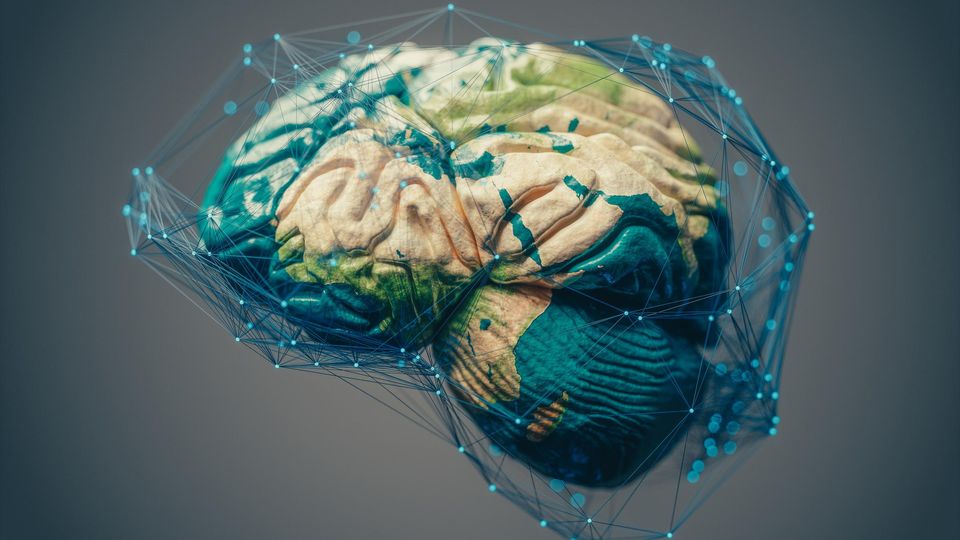Dementia Research Is “On the Cusp of a Major Breakthrough”
The world’s largest protein biomarker discovery effort hopes to improve representation in neurodegeneration research.

The COVID-19 pandemic forced the brakes on hundreds of clinical trials worldwide. Though challenging for the pharmaceutical and biomedical sectors, this era prompted researchers to find innovative ways to pursue their work or to start something completely new.
For Janssen Research & Development, a Johnson & Johnson company, innovation took the form of a public–private partnership with Gates Ventures, the private office of philanthropist Bill Gates. The partnership, spearheaded by Janssen’s then Global Lead in Neuroscience Discovery and Translation, Sir Simon Lovestone, aimed to fund new proteomics analyses of biosamples previously collected from healthy people and those with neurodegenerative disorders.
“Alzheimer’s disease is a growing burden for healthcare across the world. This drove us to deeply examine the Alzheimer’s R&D space, speaking with dozens of experts. We saw a role for philanthropy – not to replace federal funding or pharma investment, but to make strategic, catalytic bets that move the field forward,” Dr. Niranjan Bose, managing director of Health & Life Sciences at Gates Ventures, told Technology Networks.
Initially, Janssen and Gates Ventures collaborated to support the analysis of up to 20,000 existing patient samples using Somalogic’s SomaScan® 7k platform, a next-generation proteomics assay.
The partnership laid the foundations for the Global Neurodegeneration Proteomics Consortium (GNPC), a first-of-its-kind consortium that represents the world’s largest protein biomarker discovery effort for neurodegenerative diseases.
Officially launched in 2023, the GNPC unites academic, governmental and industry researchers in their study of Alzheimer’s disease, Parkinson’s disease, frontotemporal dementia (FTD) and amyotrophic lateral sclerosis. It now has 23 partners and has collected over 35,000 patient samples (including plasma, serum and cerebrospinal fluid) from international research groups. This data has been used to create the consortium’s V1 Harmonized Data Set (HDS), which consists of almost 250 million unique protein measurements.
The overarching goal of the GNPC is to expand our molecular understanding of what drives neurodegenerative diseases to enhance diagnostics and improve treatment outcomes.
Why proteomics? Bose explained how the need for blood-based biomarkers is crucial to accelerate neurodegenerative disease detection in a non-invasive, scalable and affordable way: “We recognized the importance of going beyond a single analyte like p-tau217 to stratify conditions with co-pathologies,” he told Technology Networks. “We felt that it could be helpful to lean on proteomics to see if there is an open aperture-type method that can provide a subset of signatures or panels that may help us stratify across conditions.”
“We also saw the potential in analyzing proteomics data from past cohorts – some as far back as 10 to 20 years – to see if those signals play out, which could help predict disease risk even earlier,” Bose added.
Neurodegenerative diseases share proteomic signatures
The V1 HDS was released for intra-consortium analysis in June 2024, followed by public access via the Alzheimer’s Disease Data Initiative’s AD Workbench in June 2025. Of the GNPC's V1 HDS samples, 40% are longitudinal, and the majority are from disease-affected individuals. Most of the analyses were conducted using the SomaScan 7K assay, with a small proportion of samples also analyzed with mass spectrometry methods.
A series of Nature Medicine papers published in July presented the consortium’s initial findings.
One study featured in the series, by Ali et al., analyzed 10,527 plasma samples from the V1 HDS to identify proteins that are disease specific and shared across neurodegenerative diseases. Approximately 5,187 proteins were significantly associated with Alzheimer’s disease, 3,748 with Parkinson’s and 2,380 with FTD. Proteins involved in immune system processes, glycolysis and matrisome-related pathways were enriched across all diseases. While Parkinson’s disease and FTD shared the most proteins, Alzheimer’s and Parkinson’s shared the least.
Another study, led by Dr. Caitlin Finney, head of the Neurodegeneration and Disease Modelling Lab at the University of Sydney, used machine learning to analyze proteomic data from cerebrospinal fluid, plasma and brain tissue, identifying a shared APOE ε4-associated pro-inflammatory immune signature across Alzheimer’s and other neurodegenerative diseases.
“I cannot wait to see what other discoveries are made in the years to come, especially now that the GNPC dataset is available to the public,” Gates said in a World View piece also published by Nature. “We are on the cusp of turning the tide against dementia.”
Expanding global representation in neurodegeneration research
The GNPC is now building on its success with V2 HDS, which hopes to improve global representation in neurodegenerative research.
Disease etiology and presentation can differ across populations, affecting both diagnosis and treatment outcomes. To address this, more research initiatives are prioritizing diverse recruitment and gathering biological data from broader populations. These efforts aim to help scientists and clinicians better understand population differences and develop more precise, effective diagnostic and treatment strategies. V2 HDS is spearheading these efforts by collecting data from 10 cohorts across Central and South America, Asia and Africa to profile 50,000 samples.
The V2 HDS will incorporate additional analytical platforms, including Olink® Explore HT and NULISA™ technology, alongside SomaLogic's expanded 11k assay. "In V2, we plan to analyze all samples using Olink, SomaScan and NULISA. Rather than choosing a single proteomics technology, we are creating a public database that will enable the field to evaluate the utility of these various platforms for studying neurodegeneration,” Bose said.
The GNPC V2 HDS is currently undergoing sample analysis and data harmonization. After one year of intra-consortium analysis, it will be publicly accessible via the AD Workbench for approved users.
What it takes to advance large-scale neurodegeneration research
Bose emphasized that he feels there is a strong sense of optimism in the Alzheimer’s and dementia field more generally – from advances in biomarker diagnostics and treatments to the growing global commitment to data sharing. “I believe we’re on the cusp of the next major breakthrough,” he said.
But organizing and executing large-scale projects like the GNPC is not easy – it requires coordination and collaboration across institutions, countries and technology providers.
“Looking ahead, the success of large-scale initiatives like the GNPC will depend on addressing key challenges in research participation,” said Bose. “We must raise awareness of unmet needs, improve the consenting process and emphasize the value of contributing to a global public good. Coupled with a strong commitment to data sharing and privacy, these steps are essential to building momentum and trust – and ultimately accelerating progress in neurodegenerative research.”
Funding will also be essential. Sustained investment in research is needed not only to support the extensive infrastructure, technology and personnel required, but also to ensure equitable global participation.
“Many of the clinical samples in the GNPC database come from projects supported by government grants. Recent cuts to the US National Institutes of Health and other government institutions threaten to cut off those sources for cutting-edge biochemical fingerprinting data types that are the key components of datasets such as the GNPC’s,” Gates said. “This is the moment to spend more money on research, not less. And this is the time to encourage more collaboration across borders, not less.”





